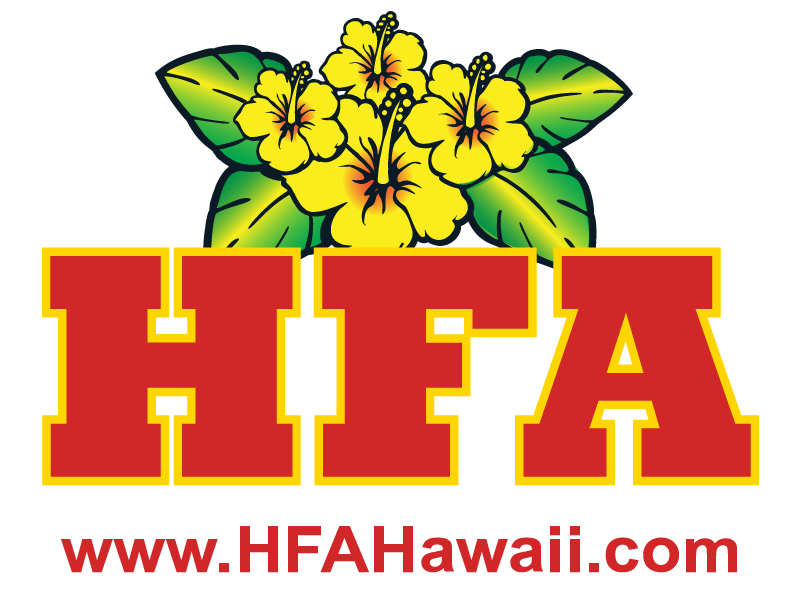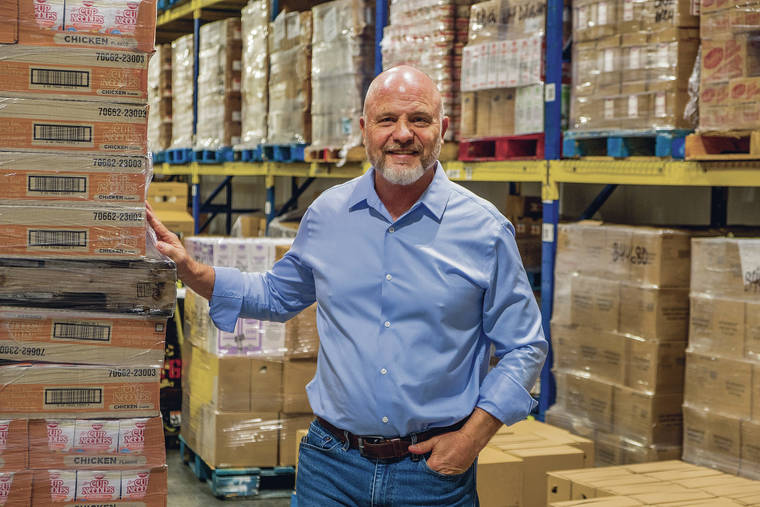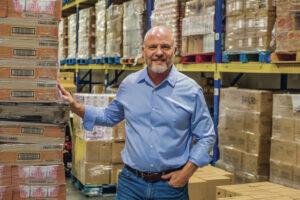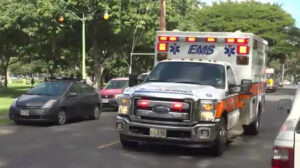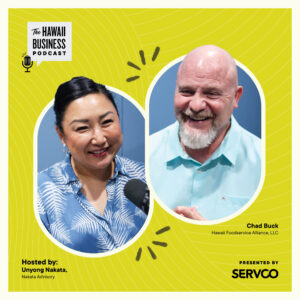Chad Buck speaks with The Star Advertiser about Hawaiʻi Foodservice Alliance’s role in Hawaiʻi food chain.
Q&A with Chad Buck, owner of Hawaiʻi Foodservice Alliance
What is your company’s role in Hawaiʻi’s food chain, including local products?
HFA is locally owned and one of the state’s largest suppliers of perishable food products. We own and operate FSMA (Food Safety Modernization Act)-compliant warehousing and distribution facilities on Oʻahu, Maui, Kauai, the Big Island and Long Beach, Calif. We specialize in ocean and air freight of highly perishable food.
HFA represents and distributes for more than 20 local manufacturers across the islands. We are also the state’s largest distributor of local eggs and local beef across all islands. We are dedicated to providing our extensive food distribution and food safety platforms for all things locally produced and actively investing in expanding in these areas.
What went into coordinating the free food distributions you’ve been involved in, and what lessons did you learn that could be applicable to future efforts?
HFA has been conducting food distribution outreaches for several years now. Our first emergency distribution of size was after Hurricane Iselle hit the Puna area on the Big Island. We were first on the ground after the hurricane and coordinated directly with the National Guard to hand out food, water and ice to those impacted by the hurricane and loss of electrical power.
This past April, we donated all of the food and milk for the event at Ala Moana on the Saturday before Easter. At that time, this was the largest food distribution event in Hawaiʻi’s history, with a line of cars that reached more than two miles long as people lined up for the food. The Salvation Army, Hawaiʻi Voluntary Organizations Active in Disaster (VOAD) and the state Department of Emergency Management (DEM) all came in to support the traffic management and provide the volunteers needed to distribute this amount of food.
Currently, we are working with the city and the Hawaiʻi Community Foundation (HCF) to coordinate the bi-weekly food distribution events. These started in April and are scheduled to go through the month of May. These events are serving 4,000 families per event.
Our history and experience in large-scale food distribution helped prepare us for these larger events. That said, partnering with great organizations like the Hawaiʻi Food Bank, DEM, VOAD, the Honolulu Police Department and the Hawaiʻi Farm Bureau is clearly the only way to conduct something of this size over an extended period of time.
It is a humbling experience to work alongside the great leadership, staff and amazing volunteers in these organizations. We typically have 20 or more of our own HFA team members at these events to handle the refrigerated trucks and logistics. The love, respect, commitment and care for others that is on display at these events from all those involved is incredible.
Who pays for all this food?
The city/HCF food distribution events (Aloha Stadium, Leeward Community College, Waipio Soccer Complex) are being sponsored by a city grant of $1 million. Bank of Hawaiʻi Foundation gave HCF a matching $1 million to equal a $2 million budget for food for this series of distributions.
The U.S. Department of Agriculture just awarded several contracts to local companies to supply food to nonprofits as well. Most of these were for produce and dairy to be provided to non-profits serving those in need.
First Hawaiian Bank just made a large donation and is working with Aloha Harvest to distribute food.
Stephanie and I also donate milk, eggs, produce and ramen for a variety of food distributions across all islands.
Should Hawaiʻi residents be worried about a significant reduction in certain food supplies, especially meat, in the near future? Why or why not?
In general, the food supply is in good shape. The hoarding that took place early on has subsided and grocers, clubs and retailers are slowly rebuilding their stock levels. While beef is experiencing challenges in parts of the country, we are excited about Hawaiʻi’s current planned expansions of local beef production here in the state.
What are the weak spots in Hawaiʻi’s food distribution chain, and how can they be shored up?
Hawaiʻi’s complete lack of any stockpiles of basic food, water and medical supplies to face any disaster, whether pandemic or natural disaster, should be one of our state leaders’ greatest concerns and calls to action. Hawaiʻi needs to get serious about building stockpiles of food, water and medical supplies. Hoping that we won’t get hit by hurricane or tsunami is not a strategy — it is irresponsible and places our entire population at risk.
